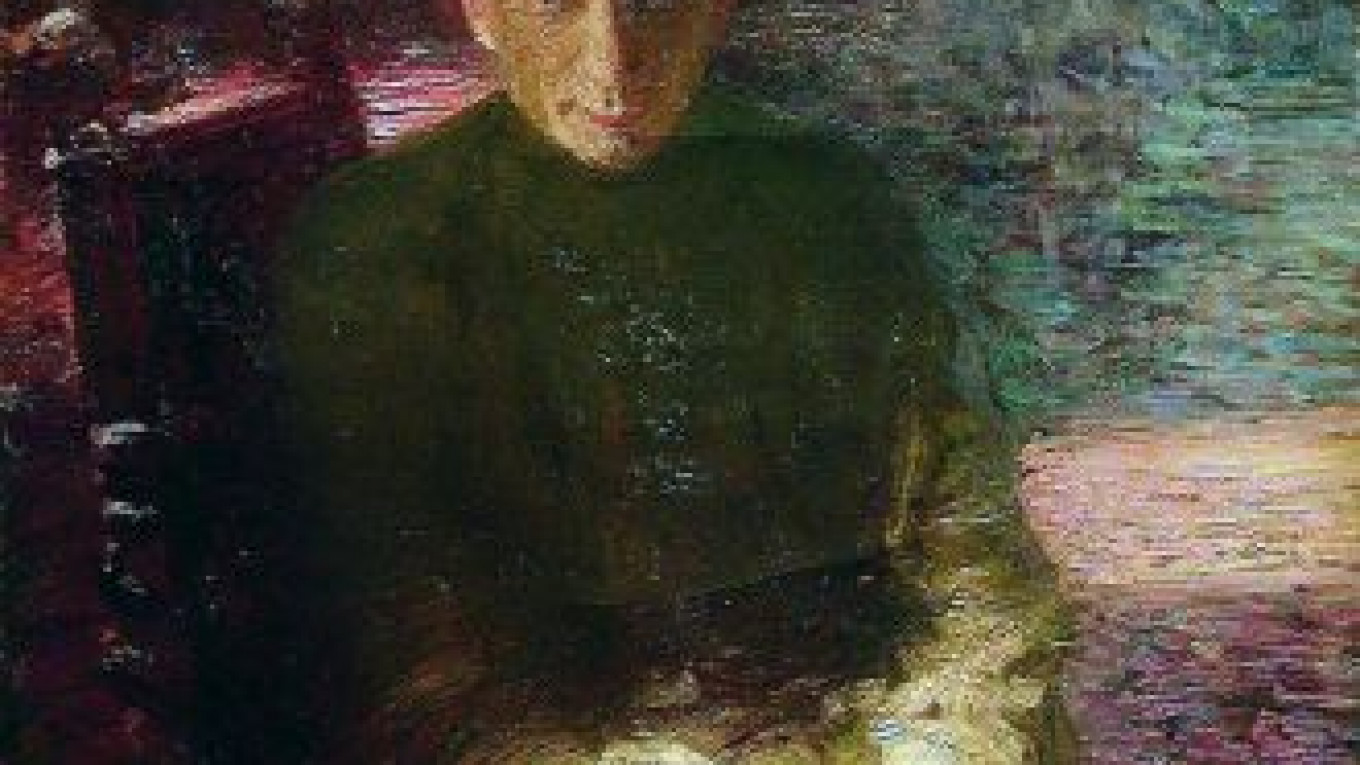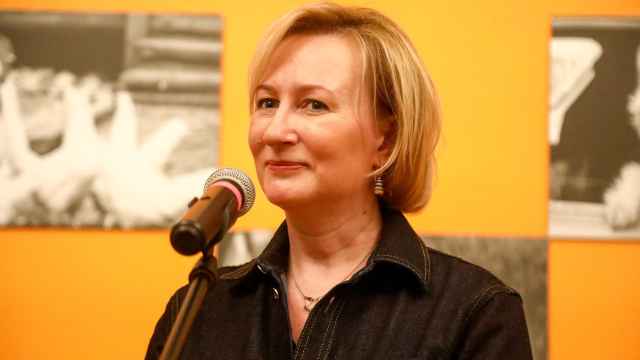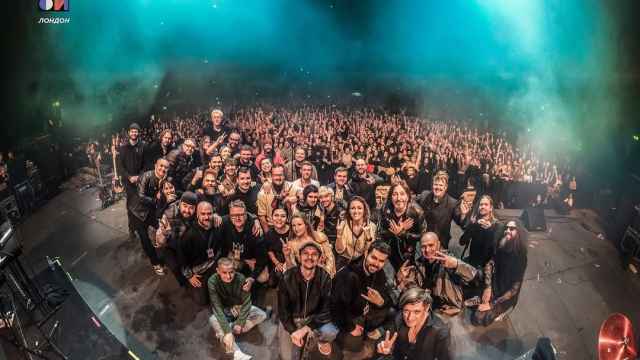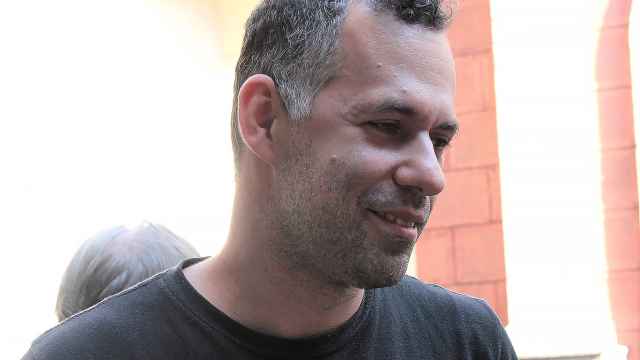ST. PETERSBURG — “Chosen by Clio,” the alternative name of the “Heroes and Villains in Russian History” exhibition currently showing at the Russian Museum in St. Petersburg, illustrates the complexity and ambiguity of the subject.
The exhibition’s organizers have attempted to cover the vast period of Russian history from Rurik to Yeltsin, cramming years of studies into several halls of the Benois wing.
“Who do you think Clio is?” asks Natalya Aniskina, a guide and senior researcher at the Russian Museum, referring to the daughter of Zeus and Mnemosyne in Greek mythology. “She represents history, but she is still more of a muse than a science. And we are usually more inspired by legends and tales than by bare facts.”
Before Nestor the Chronicler, considered to be the first Slavic historian, began his “Primary Chronicle” in the 11th century, there was no record other than oral folk traditions.
“Take Igor, the 9th-century ruler of Kievan Rus,” Aniskina said. “We hardly remember his two successful sieges of Constantinople, but everyone knows how viciously he was murdered by the Drevlyans.”
When collecting a tribute, Igor and his troops decided they had not taken enough from the Drevlyans, and returned to demand some more. The enraged tribe killed all the soldiers and then tied Igor to two bent trees which, when released, tore him in two.
Igor’s wife, Olga, avenged her husband’s death in a cunning yet feminine way, destroying the tribe completely. According to legend, as a supposed token of peace she took three sparrows and three doves from every house, then tied a piece of cloth to each of the birds and set a match to the cloth. The birds flew home and the Drevlyans were burned in their homes, and Olga was later canonized as one of the first figures in medieval Rus to adopt Christianity. Her grandson Vladimir, now remembered for converting the country to Christianity, had five wives before he adopted the religion, and was also sanctified, though his rule can hardly be described as holy.
The exhibition brings together various works of art from different museums of Russia, some of which have never been shown before. Painted in assorted styles, created at various times, offering diverse interpretations, they are all united by one theme: people whose names are familiar to most Russians and many foreigners. The contingent of those “Chosen by Clio” is very diverse: dukes, tsars, monks and saints, mutineers and revolutionaries, writers, musicians and philosophers. Some are iconic figures such as Peter the Great and Alexander Pushkin, revered for their contribution to Russian history. Others are less well-known, but no less important to Russia’s past. But despite the exhibition’s title, it is hard to define them as either heroes or villains. They all made an immense contribution that is impossible to measure, since it is impossible to put all the noble or evil deeds committed by one person on the scales to see which outweighs the other. And after all, heroes are human, too.
Leo Tolstoy, one of the mighty figures featured in the exhibition, effectively denied the role of individuals in history. “In historical events, so-called great men are but labels serving to give a name to the event, and like labels, they have the least possible connection to the event itself,” he wrote in “War and Peace.”
“Every action of theirs that seems to them an act of their own free will is in a historical sense not free at all, but bound to the entire course of history, and predestined from all eternity,” was Tolstoy’s fatalistic point of view. Or perhaps it’s Clio herself, or History, who selects heroes and villains for every epoch. “Time levels out negative traits and adds those that were needed,” Aniskina said.
The images tell visitors a lot, not only about their subjects, but also about the time period in which they were painted. Works painted during World War II, for example, tend to be very gory, but at the same time triumphant.
“We should take schoolchildren to the exhibition so that they learn Russian history,” Russian visitors wrote in the museum’s comments book.
The exhibit may only provide a limited glimpse of Russian history, but the 12-centuries-long journey over seven museum rooms is captivating and very enriching.
“Chosen by Clio. Heroes and Villains of Russian History” runs through March 28 in the Benois wing of the Russian Museum. 2 Naberezhnaya Kanala Griboyedova. St. Petersburg. Tel. (812) 595-4248, www.rusmuseum.ru .
A Message from The Moscow Times:
Dear readers,
We are facing unprecedented challenges. Russia's Prosecutor General's Office has designated The Moscow Times as an "undesirable" organization, criminalizing our work and putting our staff at risk of prosecution. This follows our earlier unjust labeling as a "foreign agent."
These actions are direct attempts to silence independent journalism in Russia. The authorities claim our work "discredits the decisions of the Russian leadership." We see things differently: we strive to provide accurate, unbiased reporting on Russia.
We, the journalists of The Moscow Times, refuse to be silenced. But to continue our work, we need your help.
Your support, no matter how small, makes a world of difference. If you can, please support us monthly starting from just $2. It's quick to set up, and every contribution makes a significant impact.
By supporting The Moscow Times, you're defending open, independent journalism in the face of repression. Thank you for standing with us.
Remind me later.






